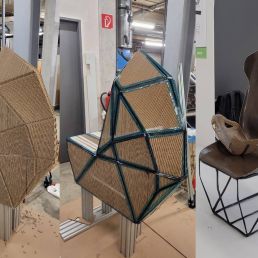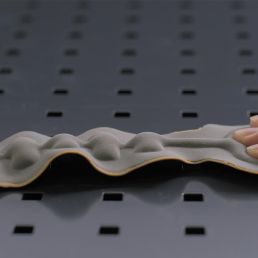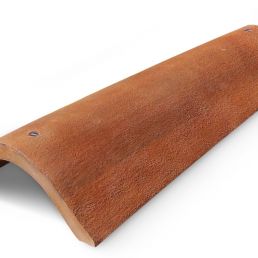Materials in Progress
Innovations for Designers and Architects

Authors:
Diana Drewes, Sascha Peters
Publisher
Birkhauser (Basel/Berlin)
June 2019
Innovations in the materials we use have influenced the development of mankind since time immemorial. New materials are constantly triggering major changes in society, the environment and technology. Today, 70% of all product innovations are attributed to new findings in materials science and a new generation of products is emerging that exploits new functionality made possible by materials research. At the same time, researchers are constantly extending the boundaries of what is feasible and creating materials that will have an important impact on our everyday lives. We are currently on the verge of major new technological advances that will have a disruptive effect on many sectors, whether mobility, consumption or energy supply. As such, material developments point the way forward in many different respects.
In industry, materials are needed that require far fewer resources than was the case 20 years ago, that can fulfill multiple functions, are lighter, thinner, denser and mechanically stronger and also support the potential of a digitalized world. Designers and architects, in turn, frequently deal with questions of sustainability and the impending scarcity of resources and are developing their own material solutions that are founded on bio-based recyclables or waste from other industries and can be fed back into material cycles when a product’s life cycle comes to an end. In the process, approaches previously of limited applicability for industrial mass production are being rediscovered and revived through new processing techniques such as additive production. The artisanal know-how of old crafts techniques or knowledge of locally available plants or useful waste material that was previously passed down from generation to generation are experiencing a renaissance.
In recent years, designers have increasingly turned to developing their own material innovations to realize product ideas and production and disposal goals that they were not able to achieve using what was available on the market. This renewed focus on materials has given rise to a new field of activity for designers, that in turn has spawned numerous new developments. In many cases, their work is several years ahead of application scenarios in industry and one can expect to see industry adopt some of the methods in the coming years. Achieving greater functionality with fewer means, lower CO₂ emissions in production and disposal, less waste and disposable plastics and more effective material cycles are goals that can help foster and positively influence important social trends and developments such as the transition to new modes of energy production and mobility, the digitalization of our various living environments and the increasing urbanization of society.

In eight chapters the book bridges the gap between science and industrial research and architecture and design applications. In a handy format it offers a well-founded overview of current material innovations such as edible packaging, liquid light or smart natural materials. At the same time, the social dimension of such developments is taken into consideration.
Ecoblaq molecular wood colours
23 March 2024
Ecoblaq is a molecule manipulation method, a natural chemical reaction, making…
Natural fiber reinforced car seat
22 October 2023
The focus of the project "Design for Recycling" is a seat shell that is made…
MotorSkins morphing textiles
19 April 2022
Berlin based start-up MotorSkins designs and produces textiles with embedded…
3D Pioneers Challenge 2022
15 December 2021
The 3D Pioneers Challenge 2022 adresses tech pioneers who pave the way for…
IGNIS – Light from waste heat energy
12 August 2020
The availability of affordable, independent and, above all, clean electrical…
Brake disc with reduced fine dust
21 April 2021
Fine dust endangers our health. One of the main sources is traffic, especially…
Texoversum
15 July 2023
With the "Texoversum", Reutlingen University has put into operation a training…
Invisible Terracotta Solar Rooftile
10 May 2023
The family-run business Dyaqua has developed a technology to integrate a…
Xarvio – Digital Farming
8 January 2021
BASF Digital Farming GmbH has received the renowned Crop Science Award for the…








